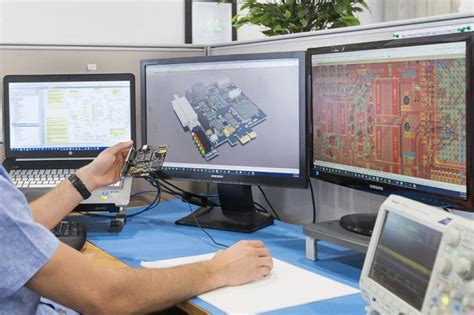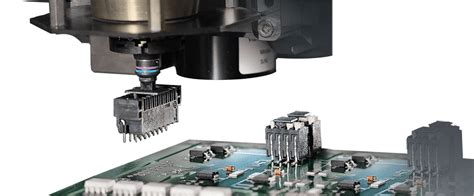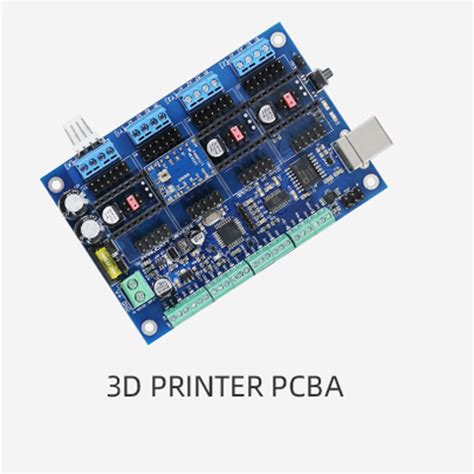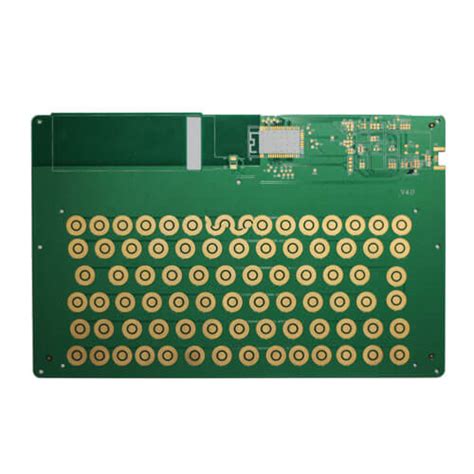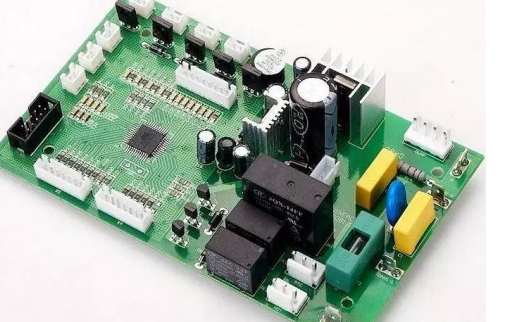Efficient PCB Assembly and Printing Techniques for Modern Electronics
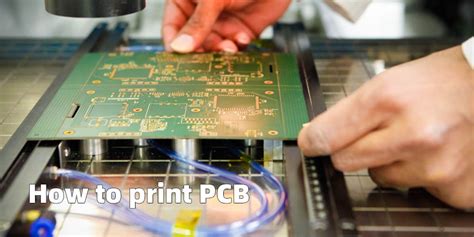
Key Takeaways
In today’s fast-paced technological landscape, the pcb assembly process must evolve to meet the growing demands for efficiency and quality. The importance of pcba cannot be overstated; it serves as the backbone of electronic devices. Through innovative techniques and advanced printing methods, manufacturers can optimize production workflows, resulting in significant cost reductions and improved reliability of finished products. For instance, adopting automated assembly techniques minimizes human error and enhances speed, allowing companies to stay competitive. Moreover, integrating advanced software solutions can aid in planning and monitoring each stage of the pcb assembly process, ensuring precision and quick turnaround times.
"By leveraging modern technology in pcb assembly and printing, businesses not only enhance their operational efficiency but also elevate their product quality."
Furthermore, embracing modular designs during the pcba process facilitates faster prototypes and customizations. It prepares manufacturers for an ever-changing market while maintaining high standards of performance. As we look ahead, staying abreast of industry trends will be crucial for businesses aiming to excel in their offerings within the electronic manufacturing sector. Adopting these efficient techniques will ensure that companies can meet customer expectations while contributing to a more sustainable future in electronics production.

Introduction to PCB Assembly and Printing
In the rapidly advancing landscape of electronics, PCB assembly and printing stand as critical processes that bridge the gap between concept and functionality. Printed Circuit Boards (PCBs) serve as the backbone of electronic devices, enabling the interconnection of components that power a myriad of applications. The efficiency of pcba (printed circuit board assembly) processes directly influences not only production timelines but also overall product quality.
Historically, these processes have evolved from manual assembly practices to highly automated systems that integrate cutting-edge technologies. The shift towards automation facilitates faster turnarounds while minimizing human error—key factors in meeting the increasing demands for precision in modern electronics. Alongside automation, adopting advanced printing methods ensures that circuit designs are executed with unparalleled accuracy, allowing for intricate configurations not previously possible.
To illustrate the impact of innovative techniques on efficiency in pcb assembly, let’s consider the following table highlighting some common methodologies applied in contemporary production:
| Technique | Description | Benefits |
|---|---|---|
| Surface Mount Technology (SMT) | A method where components are mounted directly onto the surface of PCBs. | Reduces space, allows for higher component density. |
| Through-Hole Technology | Involves inserting components through holes drilled in PCBs. | Improves durability, great for high-stress applications. |
| Robotic Pick-and-Place | Automation systems used to accurately place components on PCBs. | Increases speed and consistency compared to manual placement. |
| Automated Optical Inspection (AOI) | Uses cameras and software to inspect PCBs for defects post-production. | Ensures quality control and decreases faulty products. |
In summary, understanding these technologies highlights their significance not only in reducing costs but also in achieving higher standards for product longevity and reliability in an era where technological advancement necessitates constant innovation in pcb assembly and printing practices.
Importance of Efficiency in PCB Production
In the rapidly evolving landscape of modern electronics, efficiency in pcb assembly and production is paramount. The demand for higher performance products at competitive prices necessitates a reconsideration of traditional manufacturing processes. By prioritizing efficiency, manufacturers can reduce production time while maintaining or enhancing quality, thus responding to the dynamic needs of the market. This is where innovative methodologies come into play; through advanced methodologies in pcba, companies can optimize workflows, minimize waste, and utilize resources more effectively. For instance, the integration of automation in assembly lines has significantly accelerated processes that were once labor-intensive, allowing manufacturers to scale production without compromising standards. Furthermore, enhanced coordination between pcb assembly and printing techniques fosters a seamless transition from design to output, ensuring that quality checks and balances are built into every stage of manufacturing. Ultimately, striving for efficiency not only bolsters profitability but also reinforces a company’s reputation as a leader in delivering high-quality products within the ever-tightening timelines that characterize today’s technological environment. By embracing these principles, manufacturers can position themselves advantageously in an increasingly competitive field.
Innovative Techniques in PCB Assembly
In the realm of pcb assembly and its associated processes, innovation plays a pivotal role in driving efficiency and enhancing overall productivity. One emerging trend is the adoption of automated pick-and-place systems, which significantly reduce the time required to position and mount components on printed circuit boards (PCBs). This technology not only accelerates the assembly process but also minimizes human error, thereby improving precision. Furthermore, the integration of advanced soldering techniques such as selective soldering and reflow soldering allows manufacturers to achieve high-quality connections while maintaining a compact design, which is essential for modern applications. Another noteworthy technique is the implementation of lean manufacturing principles in pcba, which focuses on eliminating waste and optimizing each step of production. By streamlining workflows and enhancing communication between teams, manufacturers can better respond to market demands while keeping costs under control. Additionally, embracing data analytics in PCB manufacturing provides insights that enable continuous improvement and predictive maintenance, ensuring that production lines remain efficient and responsive. As these innovative methods evolve, they set new benchmarks for quality standards in electronics development, paving the way for more reliable and advanced electronic devices.

Advanced Printing Methods for Circuit Boards
The landscape of pcb assembly and printing is rapidly evolving, driven by the need for higher precision and efficiency in the production of modern electronic devices. One of the advanced printing methods reshaping this domain is screen printing, which enables quick application of solder paste to circuit boards while maintaining accuracy. In addition, inkjet technology is gaining traction due to its ability to deposit a wide range of materials in precise patterns, enhancing the flexibility in design options while reducing material waste. Another noteworthy technique is laser direct structuring, which allows for the creation of intricate patterns directly on substrates, thus streamlining manufacturing processes and minimizing setup time. These modern approaches not only facilitate faster pcba processes but also contribute to overall cost reduction by maximizing use of materials and minimizing defects. As these innovative techniques continue to develop, they promise significant improvements in both production speed and product quality, meeting the increasing demands placed on electronic manufacturers today. Ultimately, embracing these advanced printing methods leads to more reliable and efficient production, ensuring that companies remain competitive in a rapidly advancing technological landscape.
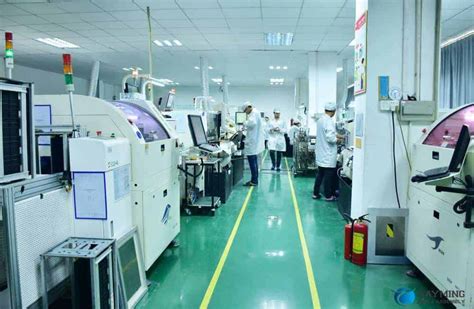
Streamlining Production Processes
In the realm of pcb assembly, streamlining production processes is crucial for enhancing both efficiency and effectiveness. By implementing advanced methodologies such as Lean manufacturing principles and automation technologies, manufacturers can significantly reduce waste and improve turnaround times. Techniques like Just-In-Time (JIT) and agile production schedules allow for a more responsive approach to demand, ensuring that materials, such as components for pcba, arrive exactly when needed. Furthermore, integrating automated assembly lines with smart inventory management systems not only minimizes human error but also optimizes the flow of work-in-progress items. Utilizing machine vision systems for quality checks at various stages of pcb assembly enables early detection of potential defects. This proactive approach not only enhances productivity but also promotes higher levels of product consistency and reliability. As industry challenges evolve, the continuous refinement of production processes remains imperative to meet the increasing demands for technological precision in modern electronics.
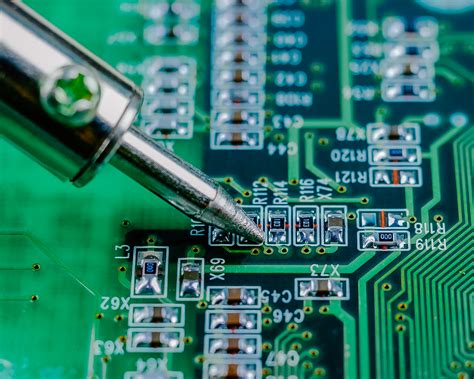
Cost Reduction Strategies in PCB Manufacturing
In the ever-evolving field of electronics, cost reduction remains a critical objective for manufacturers focused on PCB assembly. One effective strategy involves optimizing the pcba process by employing advanced methodologies that enhance efficiency. The implementation of automated assembly lines not only speeds up production but also minimizes human error, leading to lower labor costs and improved consistency in product quality. Additionally, utilizing materials that offer the same performance at a lower price can significantly cut costs without sacrificing functionality. By conducting thorough analyses of the supply chain, companies can identify potential savings in sourcing raw materials and components critical to pcb assembly. Furthermore, investing in training for employees on best practices and new technologies can further streamline operations and reduce waste. This dual approach—enhancing operational efficiencies while optimizing resource allocation—sets a solid framework for significant cost savings throughout the entire pcba lifecycle. As manufacturers continue to navigate the competitive landscape of modern electronics, these strategies are integral for sustaining profitability and facilitating growth.
Enhancing Product Quality Through Technology
In the realm of pcb assembly and manufacturing, the integration of advanced technologies plays a critical role in enhancing product quality. One of the key innovations observed is the implementation of automated optical inspection (AOI) systems, which significantly improve the accuracy of quality assessments in pcba processes. These systems employ sophisticated cameras and software algorithms to analyze circuit boards, identifying defects that may be invisible to the human eye. Moreover, utilizing machine learning algorithms in these inspections allows for continuous improvement over time, adapting to new types of defects as they arise.
In addition to inspection technologies, advancements in soldering techniques have also contributed to heightened product reliability. The use of laser soldering not only ensures precision application but also minimizes thermal stress on components, enhancing their longevity. Furthermore, embracing environmentally-friendly materials in production further aligns with current trends towards sustainability without compromising the quality and durability of finished products.
Through these strategies, manufacturers can meet or even exceed current industry standards while addressing customer demands for high-performance electronic devices. Overall, leveraging technology in pcb assembly not only optimizes production efficiency but also significantly elevates product quality, paving the way for future innovation in modern electronics.
Future Trends in PCB Assembly and Printing
As the demand for more sophisticated and compact electronic devices continues to rise, the future trends in PCB assembly and printing are evolving rapidly to meet these needs. One significant trend is the increasing integration of automation and robotics into the pcba process. This technology not only accelerates production but also enhances precision, reducing the risk of human error. Additionally, advancements in materials science are leading to more robust substrates that can support higher frequencies and more complex circuits, pushing the envelope of what is possible with modern electronics.
Furthermore, the shift towards sustainable practices in manufacturing is prompting companies to explore eco-friendly materials and processes. Techniques such as inkjet printing are gaining popularity due to their ability to minimize waste while allowing for more flexible design options. Another notable trend is the adoption of digital twin technology, which enables manufacturers to create virtual models of their pcb assembly processes for simulation purposes. This innovation allows for better optimization of production lines before implementing changes physically.
In tandem with these advancements, continuous improvements in software tools for design and testing are providing engineers with enhanced capabilities to streamline workflows from conception through production. The emergence of smart factories, equipped with Internet of Things (IoT) devices, facilitates real-time monitoring and data collection, ultimately driving further efficiencies in pcb assembly processes.
In summary, the future landscape of pcba is shaped by cutting-edge technology that emphasizes efficiency, precision, sustainability, and smart manufacturing solutions. As industries adapt to these changes, they will be better positioned to meet the evolving demands of modern electronics while maintaining high standards of quality and performance.
Conclusion
In conclusion, the field of PCB assembly and printing has witnessed significant advancements that align with the growing demands of modern electronics. The adoption of innovative techniques and advanced printing methods has not only improved production efficiency but also ensured a higher standard of quality. As we navigate through complexities in the market, efficient PCBA processes enable manufacturers to meet stringent timelines while maintaining cost-effectiveness. Implementing strategies that enhance production workflows further facilitates a streamlined approach, reducing errors associated with traditional methods. By embracing these technologies, companies can leverage improved accuracy and reliability in their circuit board designs, ultimately leading to elevated products that cater to contemporary technological needs. The future of PCB assembly looks promising as continuous innovation paves the way for sustainable practices and enhanced product offerings in a competitive landscape.
FAQs
What is PCB assembly?
PCB assembly, often referred to as PCBA, is the process of combining various electronic components onto a printed circuit board to create a functioning electronic circuit. It involves soldering components, such as resistors, capacitors, and integrated circuits, onto the board.
What techniques are used in PCB assembly?
Several innovative techniques are employed in PCB assembly, including surface mount technology (SMT), through-hole technology, and a mix of both. These methods ensure that components are placed accurately and efficiently while meeting modern technological demands.
How do advanced printing methods enhance PCB production?
Advanced printing methods, such as screen printing and inkjet printing, greatly enhance the precision and quality of the circuit traces on printed circuit boards. These techniques allow for finer resolutions and support more complex designs, ensuring reliable performance in electronic devices.
What role does efficiency play in PCB manufacturing?
Efficiency is crucial in PCB manufacturing as it directly impacts production speed and cost-effectiveness. Streamlined processes reduce waste and errors, allowing manufacturers to meet the increasing demand for high-quality electronics while minimizing production expenses.
How can one reduce costs in PCB assembly?
Cost reduction strategies in PCB assembly include optimizing material selection, improving workflow processes, and investing in automation technologies. By adopting these strategies, manufacturers can lower expenses without compromising quality.
What technologies can improve product quality in PCBA?
Emerging technologies such as artificial intelligence (AI) for inspection processes, moisture sensitivity level (MSL) packaging solutions, and advanced testing methodologies can significantly enhance product quality. These innovations enable manufacturers to detect defects early on and ensure reliability in their electronics.


